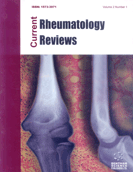Abstract
Background: Despite vigorous research efforts, the etiology of scleroderma (systemic sclerosis (SSc)) remains still unclear and both genetic and environmental factors clearly contribute to the pathogenesis of scleroderma. Reports of aberrant vitamin D status in scleroderma patients suggest a need for considering the genotype and allele frequencies of VDR gene polymorphisms. This case-control study aimed to investigate the possible association of two common polymorphisms of the VDR gene (ApaI, and TaqI) with susceptibility to scleroderma in an Iranian population.
Methods: Using polymerase chain reaction and restriction fragment length polymorphism (PCRRFLP), ApaI and TaqI polymorphisms in the VDR region were genotyped in 51 patients with scleroderma and 50 healthy controls. Logistic regression analysis was performed to calculate the genotypes odds ratios (ORs) as a measure of association with the presence of scleroderma. Haplotype and linkage disequilibrium analyses were also performed on the detected genotypes.
Results: No significant differences were found for the allelic and genotype distributions of ApaI and TaqI polymorphisms between patients with scleroderma and healthy controls (p>0.05). In haplotype analysis, three haplotypes TA, CA, and TC, with a frequency greater than 1% were identified. However, none of them was associated with the risk of scleroderma.
Conclusion: Our preliminary study showed no evidence of an association between ApaI and TaqI polymorphisms and scleroderma. As the association between VDR polymorphisms and autoimmune diseases varies across the different ethnic populations, further large cohort studies are necessary to confirm the results.
Keywords: Scleroderma, systemic sclerosis, vitamin D receptor, VDR, polymorphism, homeostasis.
[http://dx.doi.org/10.1093/jn/118.1.99] [PMID: 3335945]
[http://dx.doi.org/10.1172/JCI0215219] [PMID: 12122115]
[http://dx.doi.org/10.4149/endo_2015_01_11] [PMID: 25687676]
[http://dx.doi.org/10.1016/S0022-5347(01)69892-6] [PMID: 11257709]
[http://dx.doi.org/10.1007/s11845-017-1635-7] [PMID: 28551720]
[http://dx.doi.org/10.1016/j.ctcp.2016.11.008] [PMID: 28107851]
[http://dx.doi.org/10.1186/1756-0500-5-575] [PMID: 23095332]
[http://dx.doi.org/10.2174/18715281113129990048] [PMID: 23782212]
[PMID: 9230188]
[PMID: 7936668]
[PMID: 11585744]
[http://dx.doi.org/10.1177/0961203316682095] [PMID: 27927883]
[http://dx.doi.org/10.1177/0961203316635289] [PMID: 26921268]
[http://dx.doi.org/10.1002/acr.22621] [PMID: 25988278]
[http://dx.doi.org/10.3899/jrheum.111594] [PMID: 23204220]
[http://dx.doi.org/10.1038/nrrheum.2015.140] [PMID: 26481434]
[http://dx.doi.org/10.1136/ard.2010.137265] [PMID: 21047908]
[PMID: 22011638]
[http://dx.doi.org/10.1007/s10067-016-3535-z] [PMID: 28070764]
[http://dx.doi.org/10.3899/jrheum.091143] [PMID: 20516041]
[http://dx.doi.org/10.3899/jrheum.110695] [PMID: 22045936]
[http://dx.doi.org/10.1111/1756-185X.12794] [PMID: 26619796]
[http://dx.doi.org/10.2147/DDDT.S144860] [PMID: 29138534]
[http://dx.doi.org/10.5152/eurjrheum.2015.0065] [PMID: 27708971]
[http://dx.doi.org/10.3390/ijms17122103] [PMID: 27983651]
[http://dx.doi.org/10.1371/journal.pone.0179062] [PMID: 28598975]
[PMID: 7906461]
[http://dx.doi.org/10.1093/oxfordjournals.jbchem.a022662] [PMID: 10788778]
[http://dx.doi.org/10.1359/jbmr.1998.13.3.325]
[http://dx.doi.org/10.1210/er.2008-0004] [PMID: 18694980]
[http://dx.doi.org/10.1016/S0021-9258(19)42968-2] [PMID: 4360685]
[http://dx.doi.org/10.1146/annurev-nutr-080508-141248] [PMID: 19400699]
[PMID: 28739681]
[http://dx.doi.org/10.1177/1352458508094399] [PMID: 18653736]
[http://dx.doi.org/10.1530/eje.0.1440385] [PMID: 11275948]
[http://dx.doi.org/10.1111/1756-185X.13245]
[http://dx.doi.org/10.1080/08820139.2016.1180302] [PMID: 27409400]
[http://dx.doi.org/10.1002/art.1780230510] [PMID: 7378088]
[http://dx.doi.org/10.1186/1471-2105-8-428] [PMID: 17980034]
[http://dx.doi.org/10.1016/j.arcmed.2019.09.006] [PMID: 31678895]
[http://dx.doi.org/10.3109/03009742.2014.945477] [PMID: 25421258]
[http://dx.doi.org/10.1080/08820139.2018.1430827] [PMID: 29388852]
[http://dx.doi.org/10.1158/1055-9965.EPI-05-0814] [PMID: 16614118]
[http://dx.doi.org/10.1016/j.gene.2004.05.014] [PMID: 15315818]
[http://dx.doi.org/10.1016/j.jbspin.2011.06.003] [PMID: 21820934]










